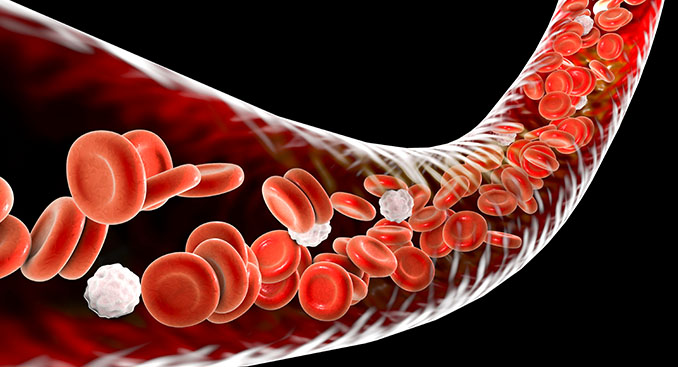- Cancer
- Community & News
- Neurology
- Patient Stories
- Service Line
4 Blood Disorders and How to Treat Them

If you are unfamiliar with blood disorders, you’re not alone. Blood disorders tend to get less attention than other illnesses, but the health of your blood is just as important as the health of your heart, brain, or lungs. The structure of blood is complex, with red blood cells, white blood cells, platelets, plasma, blood vessels, and bone marrow working together to supply oxygen, remove carbon dioxide and waste, fight infections, and provide a body-wide transportation system. Each component of blood is susceptible to problems, which is why medical experts called hematologists specialize in diagnosing and treating blood disorders. These are some of the most common blood disorders, along with treatments a hematologist may recommend.
Anemia
Moderate to severe anemia is characterized by fatigue, shortness of breath, weakness, and fast heartbeat. People with anemia are deficient in red blood cells.
“The raw material that we make red blood cells from is iron,” said Thomas Coyle MD, a hematologist and medical oncologist with TriHealth Cancer & Blood Institute. “When people are iron deficient, they can’t manufacture enough red blood cells.”
You may be at risk for developing anemia if you take NSAIDS such as aspirin, ibuprofen or naproxen; have colon polyps or cancers; bleed in your gastrointestinal tract; don’t eat enough iron; have compromised iron absorption; have had gastric bypass surgery; or have been pregnant.
You can treat anemia by increasing iron intake and having an iron infusion. Infusion centers, such as the nine TriHealth centers throughout southwest Ohio, are convenient and comfortable, said Kim Blanton, RN, manager of hematology and blood utilization for TriHealth.
Leukemia
Leukemia is a malignant blood disorder caused by elevated levels of white blood cells that crowd out healthy platelets and red blood cells. There are two different types of leukemia.
“Acute leukemia happens when most of the abnormal cells stay immature and can’t carry out normal functions,” according to WebMD. “Chronic leukemia happens when there are some immature cells, but others are normal and can function normally.”
There is no known way to prevent leukemia. Treatment includes a combination of chemotherapy, radiation, targeted therapy, stem cell transplant — from a donor or your body — and surgery.
Lymphoma
Another malignant blood disorder is lymphoma, a cancer that develops in white blood cells called lymphocytes. This cancer spreads quickly and can metastasize to bone marrow, lungs, or the liver, according to Medical News Today. The two major types are Hodgkin and non-Hodgkin lymphoma.
“Pathologists work with us closely to find out what kind of lymphoma you have, so we’re using a precise rifle rather than a shotgun,” Dr. Coyle said.
Symptoms include swelling lymph nodes (often in the neck, groin or armpits), a fever without accompanying infection, chills, unusual itching, weight loss, and fatigue.
As with other cancers, lymphoma may be treated with chemotherapy, radiation, biologic therapy, steroids and surgery.
Deep Vein Thrombosis
Clotting plays a role in some blood disorders. Deep vein thrombosis (DVT) happens when a blood clot forms in a deep vein, like the lower leg, thigh, or pelvis. If the clot dislodges and travels to the lungs, it can cause a pulmonary embolism.
“It is important to know about DVT because it can happen to anybody and can cause serious illness, disability, and in some cases, death,” according to the Centers for Disease Control and Prevention. “The good news is that DVT is preventable and treatable if discovered early.”
Prevention includes losing weight if you’re overweight, being active, avoiding staying still for long periods, and drinking plenty of water.
Related Articles
- Cancer
- Conditions & Care
- Disease & Symptom Information
- Service Line
- Cancer
- Community & News
- Conditions & Care
- Disease & Symptom Information
- Patient Stories
- Service Line